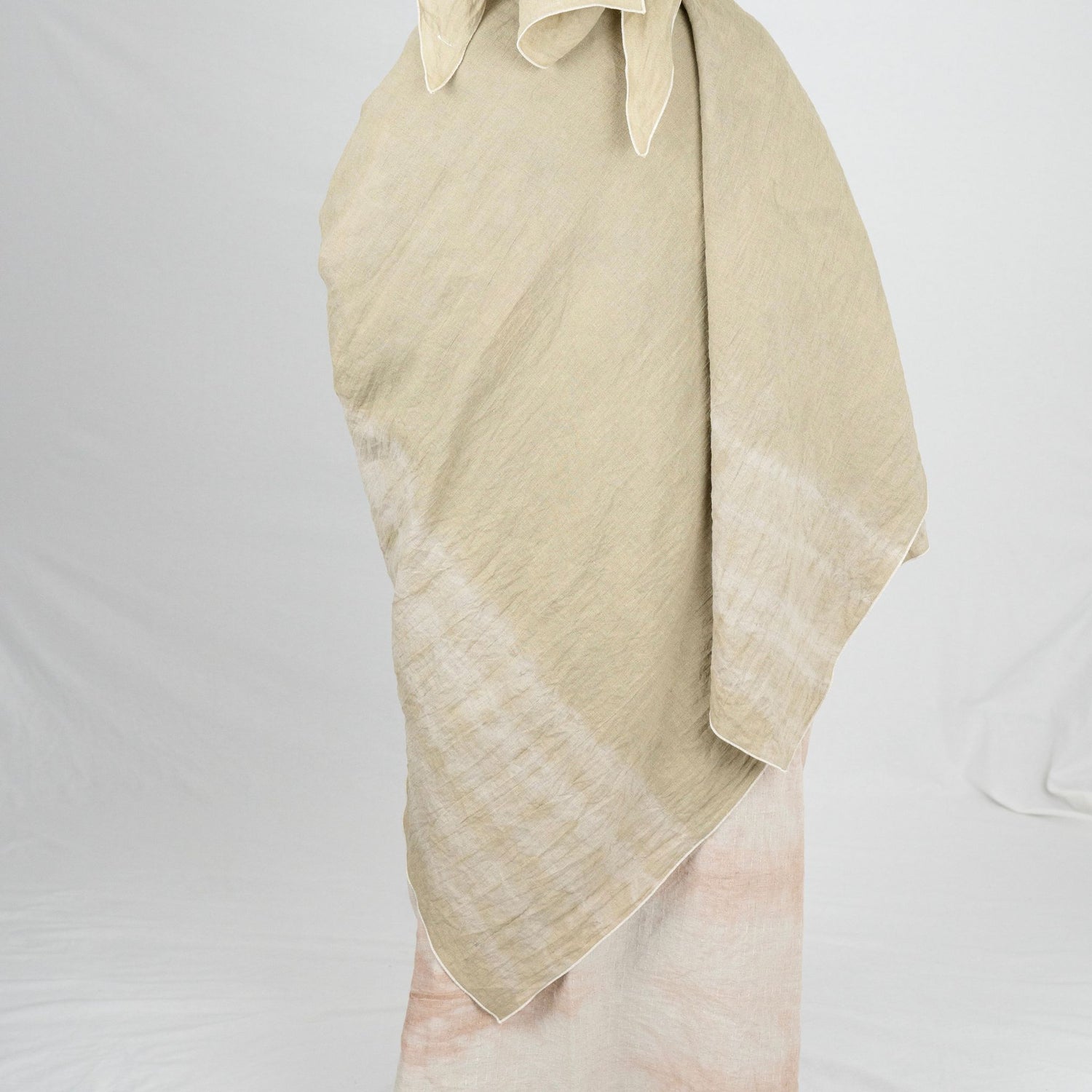Plant Dyes/Process
What Are Plant Dyes?
- Plant dyes are natural colorants derived from various plant materials, including roots, leaves, flowers, bark, and seeds.
A Rich History
- The history of natural plant dyes dates back thousands of years, with evidence of their use in ancient civilizations across the globe.
- Early cultures, including Egyptians, Greeks, and Chinese, utilized various plant materials for dyeing textiles.
- Throughout history, the art of dyeing with plants not only played a crucial role in the production of textiles but also held a rich cultural history that reflects the traditions, beliefs, and practices of societies around the world.
- The trade of natural dyes also played a crucial role in economic & cultural exchanges. For instance, the Silk Road facilitated the spread of dyeing knowledge & materials between Asia and Europe, influencing styles & techniques across continents.
- Plant dyes began to almost entirely fade out in the mid 19th century when synthetic dyes were created, which are cheaper & easier to produce, though very harmful to the dyer & environment.
- Despite the advent of synthetic dyes in the 19th century, many cultures have strived to preserve their natural dyeing traditions, passing these traditions to their children, recognizing their ecological significance and the unique beauty they bring to textiles.
- Today, there is a growing movement to revive these ancient practices as artisans & consumers increasingly value sustainable & eco-friendly methods of textile production.
Sourcing & Sustainability
I always source my dyes from sustainable suppliers who work consciously to ensure these plants flourish & continue to be used with care in natural dyeing.
- The majority of the dyes I use are sourced from these sustainable suppliers who consciously harvest plants with care. I either use the whole plant/flower & extract the dye myself or they supply me with extracts they make in their studio.
- I also create dyes & prints from various plants that I find locally in Minnesota, as well as things that I find in my kitchen such as onion & avocado skins & seeds.
- Plant based dyes became a passion for me as I realized how eco-friendly they are, nourishing not only the environment around me, but also the way in which they bring their own healing qualities to the wearer.
Examples of Dyes I use & Where They Come From
*In the search bar you can search these various dyes to find which items are dyed with each, all are also listed under each individual posting*
In order to honor the roots & culture of natural dyeing I share below where each dye is sustainable sourced from.
- Madder root - Origins in the Mediterranean region & parts of Asia.
- Red Sorghum - from the African dyeing tradition
- Cutch - South/SE asia India to indonesia
- Lac - A resin from insects from the forests of south Asia
- Himalayan Rhubarb - from the Indian Himalayan Mountains
- Marigold - Marigold is cultivated all over the world for its decorative flowers, for religious festivals and for its colourant.
- Chestnut - Mediterranean & Turkey
- Coreopsis - Bright Western Flower
- Kakishibu - Juice from unripe japanese persimmon
- Gardenia Blue - South Korea
- Quebracho - from argentina & Paraguay
- Red Sandalwood - Andhra Pradesh; SE India
- Logwood - Native to Central America (Yucatan Peninsula & parts of the Caribbean.
- Rhatany Root - Native to the high deserts of the Andes
- Camwood - evergreen tree native to West Africa
The Process of Dyeing with Plants
The process of dyeing with plants is long & slow, which I feel is the beauty of it & to me feels like the true meaning of Slow Fashion.
1. Scouring
- I begin by scouring the fabric; the process of thouroughly cleaning the fabric before dyeing to remove impurities such as oils, waxes, and dirt that may interfere with the dye absorption.
- This step is essential for ensuring even dye penetration and vibrant color results.
- Typically scouring involves soaking the fabric in a milk alkaline solution, such as sodium bicarbonate or soap, following by rinsing with water.
- By preparing the fabric in this way, scouring enhances the effectiveness of the dyeing process, allowing the natural dyes to bond more effectively with the fibers.
2. Mordanting
- I use a mordant called Alum Lactate, which is a natural binding agent used to help plant-based dyes adhere more effectively to the fabric, enhancing the color's vibrancy & longevity. Derived from naturally occuring compounds, it allows dyes to bond with fibers in a way thats gentle on both the fabric and the environment. Unlike synthetic mordants, which can involve harsh chemicals, the Alum Lactate Mordant process minimizes environmental impact and aligns with Earth-conscious practices. By choosing this method, we support a sustainble dyeing process that respects both nature & tradition.
3. Shibori Designing
- Shibori designing is a traditional Japanese resist dyeing technique that involves folding, twisting, or binding fabric to create unique patterns. By securing the fabric in various ways - using knots, stitches, or clamps - certain areas remain undyed while others absorb the plant dye. This results in intricate & unique designs and textures, showcasing the beauty of both the dye & fabric. Incorporating shibori into my dyeing process adds depth & artistry, making each piece a completely unique & one-of-a-kind garment.
4. Dyeing
- After the above steps the fabric, now on about day 2-3, is ready to be dyed. Depending on the dye being used, the pH of the dye bath is tested & altered if necessary. The fabric is presoaked before this step to ensure even uptake of the dye. The fabric is then placed into the dye bath & heated up to a specific temperature & typically held at that temperature for around an hour with continuous stirring. After the desired hue is reached, the fabric is rinsed & dried, resulting in beautifully dyed textiles that reflect the natural world.
5. Rinsing
- When rinsing out the dye there is a special soap called synthropal that is made specifically to help wash out excess dye particles. This is used after dyeing to ensure there isn't splotches that continue to dye.
- Washing & care of the fabric is of utmost importance to keep the colors vibrant & long lasting! I always advise to use natural pH neutral soaps when washing any naturally dyed fabrics.
Why I Choose Plant Dyes
- I have a deep love & passion for using plant dyes as a way to honor the beauty in the world around as as Gods creation, to be in harmony with the earth, as an act of devotion to sustainability & to deeply honor & keep alive the ancient craft of connecting with plants & learning to use them as color.

Heirloom Pieces
Linen is a timeless fabric known for its durability and beauty that deepens with age. Each piece I create is designed to be cherished, becoming softer and more luminous over time. By choosing high-quality linen and natural dyes, I aim to craft heirloom garments that can be passed down, carrying stories and memories through generations.
